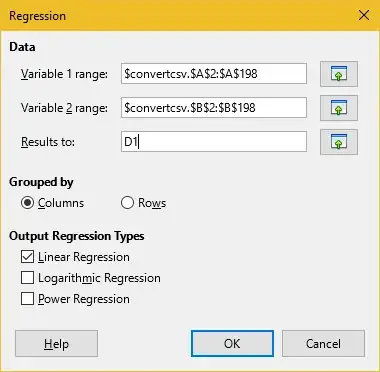Let $X_1$ and $X_2$ be iid non-central t random variables.
I'm interested in the question: what is the distribution of $X_1 - X_2$?
i.e. what is the distribution of the difference of two iid noncentral Student t variates?
Suppose $d$ is an observed estimate for either $X1$ or $X2$, in R code, the likelihood function for $d$ will be:
likelihood = function(x) dt(d*sqrt(N), df, ncp = x*sqrt(N))
where d = an observed estimate of X1 or X2, x = parameter range (-Inf to Inf), N = sample size, and df = N - 1.
P.S. dt(x,df,ncp) is the pdf of a noncentral t distribution with the third argument ncp being the non-centrality parameter.
